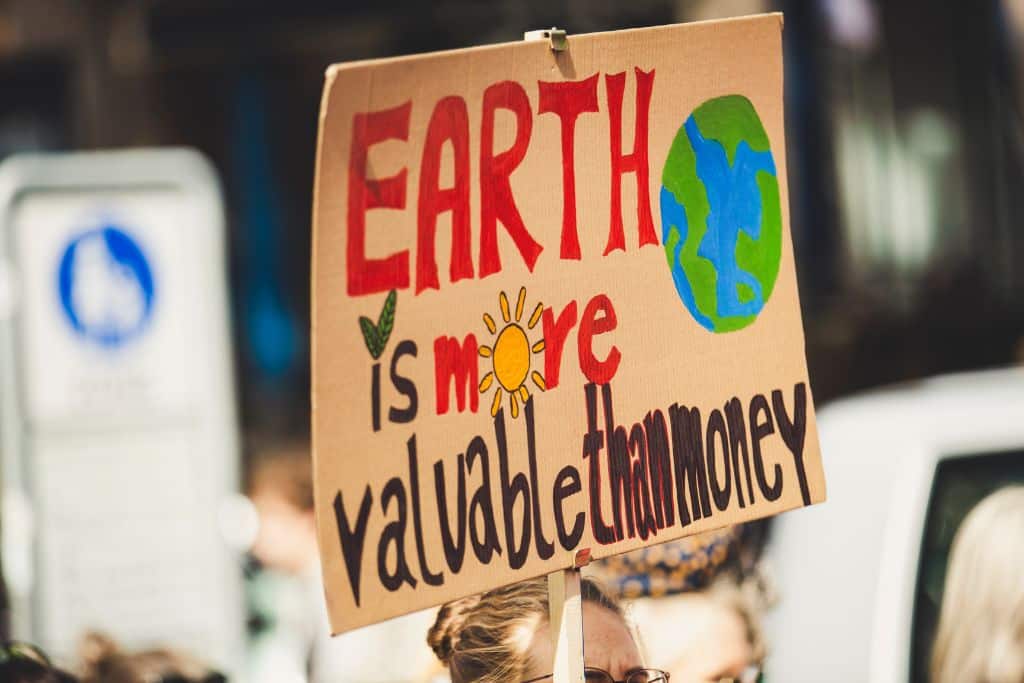
Three quarters of the 2,967 climate cases filed globally to date were filed in the last decade, as the adoption of the Paris Agreement in 2015 marked a turning point in climate litigation globally.
—
Climate litigation has entered a more “mature and complex” phase as its impacts become “increasingly visible”, according to a new report tracking trends and evolutions in the legal field.
The adoption of the Paris Agreement in 2015 marked a turning point in climate litigation globally, with nearly three quarters of all cases filed in the last decade. Since then, the legal field has consolidated as a popular strategy to tackle the ongoing climate crisis, used by governments, private actors, civil society and individuals locally, regionally, nationally and internationally, according to the report by the Grantham Research Institute on Climate Change and the Environment at the London School of Economics and Political Science.
At least 226 new climate cases were filed in 2024, bringing the total number of cases filed to date globally to 2,967, as per two databases compiled by the Sabin Center for Climate Change Law.
But while in the majority of cases, plaintiffs seek legal avenues to hold government and corporations accountable for their contribution to climate change and inaction, a significant number of them – 60 last year alone – involve arguments that are not aligned with climate goals. The report mentions as examples lawsuits questioning governments’ authority in pursuing climate policy or companies’ sustainable agendas.
Recent developments in the US have shown that climate litigation is a “two-way street”, used both to help climate action and slow it down, said Joana Setzer, Associate Professorial Research Fellow at the Grantham Institute. She added that non-climate aligned litigation represents “new challenges for politicians, businesses and climate activists.”
Climate change litigation definitions – click to view
- Climate change litigation: cases before judicial and quasi-judicial bodies that involve material issues of climate change science, policy or law.
- Strategic litigation: litigation where the claimant [or plaintiff] seeks to both win the individual case and influence the public debate or change the behaviour of a targeted group of actors in relation to climate action.
- Climate-aligned litigation: cases that appear from the complaint and any campaign material to be requesting judicial relief that would align with climate action goals, fostering resilience to climate impacts or reducing greenhouse gas emissions. Determining if a case is climate- aligned is not always straightforward, given the variety of views about the best way to successfully achieve climate change adaptation and mitigation.
- Non-climate-aligned litigation: cases that appear from the complaint and any campaign material to be requesting judicial relief that would prevent or delay climate action. As with climate-aligned cases, it is not always straightforward to identify such cases, as some may not be challenging climate action per se but rather the manner in which the action is being carried out.
A growing number of cases, mostly involving government defendants but also corporate defendants, are also reaching top courts – such as supreme or constitutional courts, as per the Grantham report. It added that cases against corporations appear to be having a higher overall success rate.
Climate change at the European Court of Human Rights (ECHR) – click to view
In April 2024, a ruling by the European Court of Human Rights (ECHR) made global headlines. Europe’s top human rights court sided with Climate (Senior Women for Climate Protection) – a group of more than 2,000 women aged 64 and over – in a case that saw the Swiss government accused of failing to adequately tackle the climate crisis.
The plaintiffs argued that their government’s failure to reduce greenhouse gas emissions had violated their human rights, contending that more frequent and intense heatwaves – a result of climate change – are infringing on their rights to life and health.
Based on the absence of a binding national greenhouse gas budget post 2024 and previous failure to meet emissions reduction targets, the court found a violation of the right to privacy and family life protected under Article 8 of the Convention, which it interpreted as freedom from environmental threats to one’s personal life. The Swiss state was ordered to put in place measures to address those shortcomings and cover the group’s legal costs, around €80,000 (US$87,000), within three months.

Gerry Liston, senior lawyer at the Global Legal Action Network (GLAN) – a non-profit behind a similar “government framework case” brought forward by four Portuguese children’s – called the Swiss ruling “a massive win for all generations.”
“No European government’s climate policies are aligned with anything near 1.5C, so it will be clear to those working on climate litigation in those countries that there is now a clear basis to bring a case in their national courts,” Liston said.
In recent years, there has been a notable surge in climate litigation with strategic intent, designed to push for more ambitious climate-related objectives and higher environmental standards, and to ensure transparency and accountability in climate-related decision-making processes.
According to the analysis – which is based on data collected in two databased by the Sabin Center, considered the most comprehensive database on the matter – over 80% of cases were classified as “strategic” in 2024.
“Governments and companies are increasingly having to consider the legal ramifications of pushing ahead with oil or gas projects, as they risk being dragged through the courts. [Climate litigation] is no longer a niche concern; it is increasingly seen as a financial risk,” said Catherine Higham, Senior Policy Fellow at the Grantham Institute.
Check out our explainer to learn more about the different types of climate litigation cases.
Regional Disparities
Of all cases filed in 2024, 164 were filed in the US, which remains the country with the highest number of cases filed year on year, followed by Australia, the UK and Brazil.
While still accounting for a much smaller proportion, climate litigation in the Global South is in a phase of “dynamic growth,” the institute said, with 60% of all cases recorded in the region filed in the last five years. One notable difference here is that more than half of all cases in the Global South are filed by government bodies, compared to just 5% in the Global North.
The legal field has also gained significant traction in China, where courts’ role in environmental governance is becoming more apparent, the report said. The number of environmental courts increased from 134 to 2,813 between 2014 and 2023, and prosecutors handled more than 1.9 million first-instance cases on climate-related topics, from carbon market regulations to the protection of carbon sinks and contracts related to the energy transition.
However, these cases are not yet captured in global databases – and therefore also not accounted for in the Grantham Institute’s report.
Impact Yet to Be Tested
While climate litigation continues to mature as a legal field, its impacts on climate governance, legislation and financial decision-making are becoming “increasingly visible” and “well documented”, said Higham.
In 2024, several international courts, including the International Court of Justice (ICJ), the Inter-American Court of Human Rights (IACtHR) and the International Tribunal on the Law of the Sea (ITLOS) were asked to clarify states’ obligations on climate change. While representing only a small proportion of climate cases, their non-binding opinions are poised to shape the future of climate litigation, informing both domestic courts and international political processes.
The ITLOS is the only court to have published its advisory opinion thus far, stating last May that countries must “take all necessary measures to prevent, reduce and control marine pollution from anthropogenic [greenhouse gas] emissions.” While already referenced in at least one court proceeding in the UK, its real impact on climate litigation has yet to be tested, the report said.
More on the topic: The Recent ITLOS Advisory Opinion Is a Stringent Call for Due-Diligence for Climate Impacts on Oceans
This story is funded by readers like you
Our non-profit newsroom provides climate coverage free of charge and advertising. Your one-off or monthly donations play a crucial role in supporting our operations, expanding our reach, and maintaining our editorial independence.
About EO | Mission Statement | Impact & Reach | Write for us








